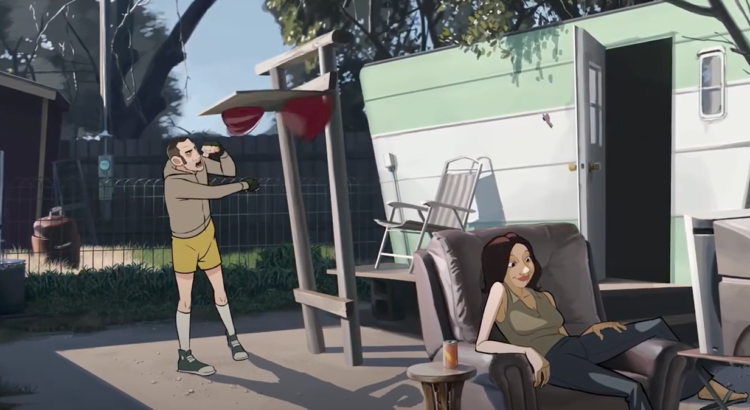Lance Myers is an artist and animator in Austin, TX. He’s truly my favorite, and here’s proof: he’s been representing me visually for a decade, creating characters for my album covers, T-shirts, movie posters… and most recently, he animated my cartoon shows That Monster Show and Oracle of Outer Space.
After 8 years of work, and a successful award-winning festival run, he has now released his own short film, Boxer Story through Persistence of Vision Publishing.
This is a great short film, and was an incredible amount of work. I just had to ask him questions about it!
Congratulations on the release of Boxer Story! This is clearly your own Lance Myers style, but how many animators worked on this, and how did you organize that workflow?
Only myself and one other—James Pierson, an animator from England who saw my kickstarter and offered to help out. I actually had several animators extend the same offer, but James was the only one who didn’t immediately run in the opposite direction when he saw my workflow on this project.
I initially hired James to help with the crowd shots, just doing ambient cheering and laughing with the characters I sent, but after I saw his ability to make great walk cycles, I had him do the Thunderpaws intro shot as well.

Did you hire actors to do all those gestures, as reference?
No, I did those all myself. And I used a variety of reference material for the boxing sequences: training videos from YouTube, boxing movies, and footage from real fights. I spliced together sequences using these clips until I had the choreography I needed.
This has so many keyframes! It’s like an older Disney film — that’s a heck of a lot of work! In Flash it’s tempting to use puppets, but this wasn’t as puppet based. I’m sure there is a question in there.
Ha! I did use a bit of puppet-based animation here and there. Mainly in background characters. But you’re right that most of this was pretty traditional.

Can you explain the Felix The Cat reference?
Are you referring to Meatball’s toy, Sparky? That’s an homage to one of my favorite artist/writers, Chris Ware. He did a series of comic strips called “Sparky’s Best Comics and Stories” starring a severed cat’s head named Sparky. So—it makes sense that Meatball’s toy would lose its head in the last scene.
Although, it’s entirely possible that Sparky, himself, is somehow referencing Felix!

Very cinematic musical moments. Lots of breathing room. How do you “write” those types of scenes?
There’s definitely an art to screenplay writing that I’m not sure I completely practice in the right way. For me, I have a certain vision for how I want the film to play and writing it out doesn’t always capture that. Luckily, I’m only writing to organize my thoughts—writing for myself rather than writing to hand it off to some other director. I have no idea how that would play out.
The score / music was very Jazzy — how did that come about?
I’ve been friends with a masterful composer named Graham Reynolds for a few decades now. He’s become Richard Linklater’s go-to guy (A Scanner Darkly, Bernie, Before Midnight) but he’s been kind enough to still slum it with me. Graham agreed to score Boxer Story when I first decided to make it. As I was working I started dropping in placeholder tracks—songs from his first album—just to give him some reference points. But in the end they fit so well we kept most of them. I think he ended up only writing one original song for the film.
I also used a song by The Stay Gold Ponyboys when Twomey is on the bus, and another by The Transgressors for Thunderpaws’ intro music.

That ending is very David Lynch! How did you settle on that?
Wow, David Lynch! I love it.
This is a story about dreams that don’t come true. I wanted to return to the moon theme and also highlight that sense that we all have dreams that don’t ever quite materialize, so switching focus to Al felt like the right thing to do. At the same time, I wanted to show his feeling of loneliness and isolation. And a little abstractness or absurdity at that moment also felt right.

Boxer Story is an archetypal story of ambition, right? Can you tell me about that?
One of my favorite moments in the film is the speech that Thunderpaws gives in the hallway. I think it kind of sums up what the movie is supposed to be about, which is this: I think it’s a little unfair to go around saying that anything is possible if you believe hard enough. That makes it seem as though anyone who comes up short in life just didn’t have the strength of will to be rich or famous or loved in the way they were hoping. It could be argued that’s a heartless way to see the world.
I hope Twomey isn’t dead!
Mmm. Me too.
The initial version of the script had a much more gruesome ending (see the Sparky reference above)
• • •
Thanks to Lance for taking some time to answer questions. You can find him on Facebook.
